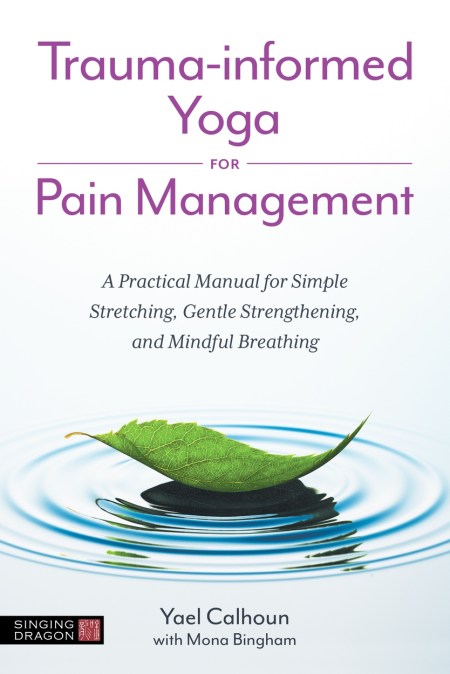This ground-breaking book offers a trauma-informed guide for everyone seeking guidance on body-based strategies for pain management. Centred around principles of building a sense of safety, supporting empowerment, and maintaining simplicity, this book takes an evidence-based approach offering clear and inclusive programs of practice.
Trauma-Informed Yoga for Pain Management first explores the complex science of pain, including the Polyvagal Theory and the science of breathing. It also explores why simple stretching, gentle strengthening, and mindful breathing are effective tools for pain management. The book then presents clear ways in which to make any program trauma-informed. The final section commands half of the book and provides many easy-to-use practices, ranging from two to ninety minutes. These trauma-informed practices are designed for anyone seeking to manage pain through stretching, strengthening, and breathwork. Supplemental materials are included to support any program: handouts, audio recordings, and many other materials.
This pioneering and practical guide meets people where they are, setting everyone up for success as they learn pain management strategies and ways to heal.
Trauma-Informed Yoga for Pain Management first explores the complex science of pain, including the Polyvagal Theory and the science of breathing. It also explores why simple stretching, gentle strengthening, and mindful breathing are effective tools for pain management. The book then presents clear ways in which to make any program trauma-informed. The final section commands half of the book and provides many easy-to-use practices, ranging from two to ninety minutes. These trauma-informed practices are designed for anyone seeking to manage pain through stretching, strengthening, and breathwork. Supplemental materials are included to support any program: handouts, audio recordings, and many other materials.
This pioneering and practical guide meets people where they are, setting everyone up for success as they learn pain management strategies and ways to heal.
Newsletter Signup
By clicking ‘Sign Up,’ I acknowledge that I have read and agree to Hachette Book Group’s Privacy Policy and Terms of Use
Reviews
Based on my 24 years of experience providing yoga practices for those with chronic physiological pain and complex psychological disturbances, it's clear that Yael Calhoun's approach to trauma-informed yoga has connected all the dots for working with pain management in this all-encompassing manual. It is thoroughly educational on the subject matter, evidence-based, and provides excellent guidance for leading easy-to-perform and effective practices. <br>
Here's a thorough and totally practical mind-body guide for pain management. It is informed by years of teaching trauma-informed yoga to veterans, refugees, incarcerated people, and the health care professionals working with clients among these diverse populations. I hope this book is as widely read by yoga teachers and front-line therapists helping guide trauma survivors to wholeness as it deserves to be. <br>
In Trauma Informed Yoga for Pain Management, Calhoun guides people with persisting pain, and their yoga teachers, in an important evolution - into an understanding of how to practice yoga in a way that address the interplay of mental health and physical health issues. The book's focus on techniques grounded in science and supported by lived experiences is exactly what so many readers need. <br>
Yael Calhoun has created an invaluable resource for practitioners, instructors and patients. Attention to anatomical and physiological details render each chapter accurate yet easy to read. Illustrations add understanding of important scientific mechanisms. This book is a delight to read and will enrich yoga practice for all who have experienced trauma in their lives. <br>

